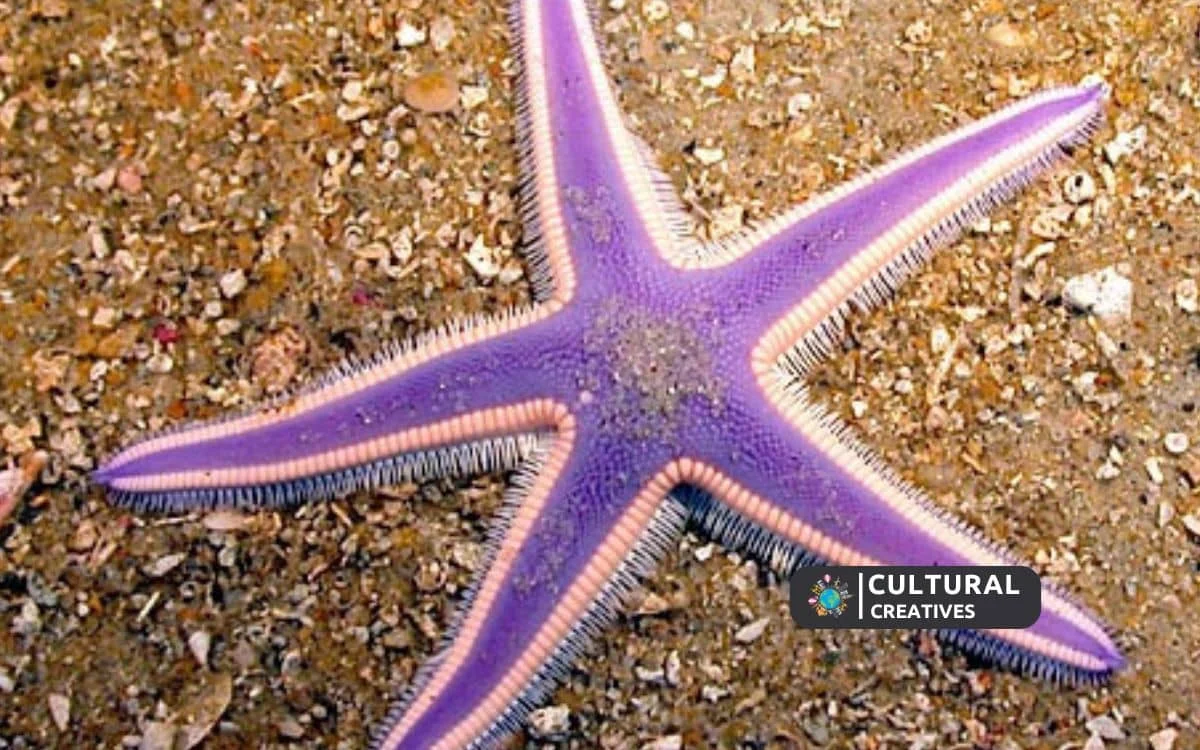There are 18 purple starfish to be found on Ginger Island in Stardew Valley. These starfish are a part of a special collection quest.
Exploring the vibrant world of Stardew Valley, players often stumble upon Ginger Island, a unique location teeming with secrets, treasures, and a myriad of colorful creatures. Among these wonders are the elusive purple starfish, a collectible item that adds an extra layer of adventure for completionists and casual players alike.
Scattered throughout the island’s diverse environments, these starfish challenge players to scour every nook and cranny, rewarding their keen observation and exploration. Finding all 18 ensures not only the satisfaction of a quest fulfilled but also contributes to the player’s overall experience and progression in the game.
A Glimpse Into Ginger Island’s Marine Biodiversity
Ginger Island, a treasure trove of the sea, reveals wonders beneath its waves. Among these marvels, purple starfish stand out. Rich colors paint a tapestry where these creatures flourish. Such biodiversity not only dazzles visitors but proves vital for ecological balance. Let’s dive into this aquatic world.
The Enigma Of Purple Starfish
- Stunning hues: Purple starfish on Ginger Island captivate with their vibrant shades.
- Rare spectacle: Stumbling upon these starfish is a special event for any marine enthusiast.
- Population count: Data on the exact number remains as elusive as the creatures themselves.
These starfish contribute to a complex marine ecosystem. They inspire awe and serve an essential role. Scientists continue to study their mysterious lives.
Significance Of Marine Diversity
| Ecosystem Health | Research and Education | Conservation Efforts |
|---|---|---|
| Biodiversity mirrors the well-being of marine habitats. | Varied species offer valuable insights to learners. | Protecting diverse life ensures the future of marine environments. |
Maintaining a balance underwater supports all life on Earth. From food chains to climate regulation, each species, including the purple starfish, plays a crucial role. Conservation fosters a thriving marine world for generations to cherish.
Purple Starfish: Unveiling The Mystery
Deep within the in-game world of Ginger Island, a dazzling spectacle hides beneath the waves. The purple starfish, a vibrant inhabitant of this virtual paradise, sparks curiosity. With their striking color and elusive nature, these creatures have become a topic of fascination for gamers and virtual explorers alike. Let’s dive into the world of these mysterious echinoderms and uncover the secrets of their existence on Ginger Island.
Species Profile
The purple starfish, known scientifically as ‘Pisaster Ochraceus’, boasts a royal hue that captivates onlookers. It’s not just their color that’s remarkable. Their regenerative abilities are like superpowers, allowing them to heal and regrow lost arms.
- Average Life Span: 20+ years
- Arm Count: Typically five, sometimes more
- Diet: Clams, mussels, and other small invertebrates
Habitat Preferences
Ginger Island’s purple starfish favor certain spots for their homes. They gravitate towards rocky, submerged landscapes where food is plentiful.
| Location | Water Depth | Substrate Type |
|---|---|---|
| Ginger Island | Shallow to Mid | Rocky |
| Coral Reefs | Varies | Coral and Rock |
| Tidal Pools | Very Shallow | Sand and Rock |
These starfish need clear water to thrive. Pollution is a serious threat to their well-being. As players progress through the game, protecting their habitat ensures their survival.
Counting The Unseen: The Challenges
Imagine trying to count all the stars in the sky. Now think of doing something similar under the sea. It’s no easy task to count the purple starfish on Ginger Island. Underwater creatures like starfish don’t stay in one place. They often hide in rocky crevices or blend into the sea floor.
Estimation Difficulties
Estimating the number of purple starfish in their natural habitat presents a number of hurdles. These creatures enjoy the island’s complex terrain, which includes countless hiding spots. They can change color, too. This means they may not even look purple!
Light under water also changes how we see their color. Water depth, time of day, and weather all make it harder. Sometimes, we have to guess how many starfish there are instead of finding the exact number.
Conducting Marine Surveys
Carrying out marine surveys is a delicate dance with nature. Experts use special tools to explore underwater worlds. They look for starfish and count them. They must work quickly so they don’t harm the starfish’s home.
- Divers swim around, counting by sight.
- Cameras capture images that experts study later.
- Remote equipment reaches places divers can’t.
Still, some areas are too deep or dangerous for divers or machines. That’s where scientific modeling helps. Models can predict how many starfish might live in those harder-to-reach spots.
Methodologies In Marine Population Studies
In the pursuit of understanding marine life, scientists closely study creatures like purple starfish. Purple starfish on Ginger Island are not just colorful beings of the sea; they represent a vital part of marine biodiversity. The methodologies used to count them have evolved significantly over the years, offering a peak into the fascinating world of marine population studies.
Traditional Count Methods
Traditionally, researchers counted sea creatures directly in their habitat. Teams would dive to the ocean floor, armed with waterproof notepads and mechanical counters. They would tally the number of purple starfish observed, creating baseline data for population studies. This method has clear limits, with human error and diving depth restrictions affecting accuracy.
- Dive surveys – Experts explore underwater habitats in person.
- Tally counters – Used to keep track of individual sightings.
- Sampling – Estimating numbers through representative samples.
Modern Technological Advances
New technologies bring precision to marine population studies. These include remote sensing, genetic sampling, and automated image analysis. Scientists now utilize drones and underwater ROVs (Remotely Operated Vehicles) to capture images of purple starfish on a grand scale. Computer algorithms then analyze these images, tallying starfish with incredible speed and accuracy.
| Technology | Use Case |
|---|---|
| Drones | Surveying large sea areas from above. |
| ROVs | Gathering underwater imagery. |
| Image Analysis | Counting starfish in photos and videos. |
- Genetic Sampling – Determines population diversity and size.
- Environmental DNA (eDNA) – Traces starfish presence in water samples.
Human Impact On Purple Starfish Populations
Human Impact on Purple Starfish Populations is an urgent topic. Purple starfish are key to Ginger Island’s marine health. Yet, their numbers change, often due to human actions. To save these creatures, we must understand our impact.
Coastal Development Effects
Coastal areas on Ginger Island have seen rapid change. Hotels and resorts now dot the landscape. These developments can harm purple starfish populations. Construction projects can destroy starfish habitats. Beach traffic disturbs their living spaces. Purple starfish need stable, quiet environments to thrive.
- Loss of habitat: Starfish homes disappear with new buildings.
- Light pollution: Bright lights disrupt starfish and their food sources.
- Physical disturbances: Foot traffic and vehicles impact the delicate shoreline.
Pollution And Its Consequences
Pollution’s role in the decline of Purple Starfish on Ginger Island is major. Waste from mainland sources reaches the island’s waters, causing trouble for marine life.
| Type of Pollution | Consequences for Starfish |
|---|---|
| Chemical runoff | Poisons food and harms starfish health |
| Plastic waste | Entangles and injures starfish |
| Oil spills | Coats and suffocates marine life |
Starfish suffer when we pollute the water. Preventing pollution is crucial. Simple acts like reducing plastic use and promoting clean water initiatives help. Every effort counts in protecting the purple starfish on Ginger Island.
Conservation Efforts For Ginger Island’s Starfish
The starfish of Ginger Island dazzle in vibrant purple hues, drawing nature enthusiasts and biologists alike. Protecting these marine wonders is vital. Let’s explore the initiatives that safeguard these starfish.
Local Initiatives
Focused community action leads the charge in conservation. Education programs inform residents and tourists about starfish. Beach clean-ups and responsible tourism practices help maintain their habitats.
- Beach patrols monitor starfish populations
- Restricted access areas ensure breeding grounds remain undisturbed
- Volunteer programs engage the local community
Global Importance Of Preservation
The purple starfish of Ginger Island play a critical role in our oceans. They serve as indicators of marine health and contribute to biodiversity. International partnerships work to amplify local efforts, securing a global network.
| Global Effort | Impact |
|---|---|
| Marine Protected Areas | Safe havens for starfish to thrive |
| Funding for Research | Insights into starfish behavior and genetics |
| Climate Change Mitigation | Protection from ocean acidification and warming |
Citizen Science And Public Awareness
Citizen science bridges the gap between scientific research and the public.
It turns ordinary individuals into researchers looking at the world with a curious eye.
On Ginger Island, this approach shines a spotlight on the various species that call it home, like the enchanting purple starfish. Through participation and education, communities become protectors of their natural heritage.
Engaging The Community
Successful conservation starts with community involvement. Engaging local residents and visitors in Ginger Island’s ecosystem teaches them about the importance of biodiversity. Here’s how we bring people together:
- Beach walks and starfish counts for all age groups.
- Interactive apps to report and track starfish sightings.
- Contests that reward the most active citizen scientists.
These activities inspire participants to take a hands-on role in conservation. They also foster a connection with the island’s natural wonders.
Educational Programs
Knowledge is power, and educational programs empower the community.
Our targeted sessions include:
- School visits that combine fun and learning about marine life.
- Workshops for locals on environmental impact.
- Online courses available to a global audience.
These programs aim to create informed custodians of the environment. They highlight the critical role of the purple starfish in marine ecosystems. Children and adults learn, through engaging content, how to preserve this precious species for generations to come.
The Future Of Purple Starfish On Ginger Island
Ginger Island, known for its vibrant marine life, is home to the striking purple starfish. Their future sparks curiosity among scientists and nature enthusiasts alike. Understanding the factors that could shape their destiny is crucial for conservation efforts. Let’s dive into what awaits these colorful creatures in the years to come.
Projected Trends
Data suggests changing patterns in the purple starfish populations. Research forecasts fluctuating numbers due to various influences.
- Reproductive rates: Studies indicate potential growth with favorable conditions.
- Food availability: Ample prey could support population increases.
- Predator presence: Fewer predators may lead to more starfish thriving.
The Role Of Climate Change
Climate change plays a significant role in the lives of purple starfish. Warming waters and acidification pose threats. Protective measures are essential.
| Climate Factor | Impact on Purple Starfish |
|---|---|
| Temperature Rise | Habitat disruption leading to migration or mortality. |
| Ocean Acidification | Shell weakening, reducing survival chances. |
| Sea Level Changes | Altered ecosystems affecting food sources. |
Conservation steps are vital for the purple starfish. Awareness and action can ensure their survival on Ginger Island.
Conclusion
Embarking on the quest for purple starfish at Ginger Island becomes a delightful highlight for any beachcomber. This pageant of marine life showcases the island’s vibrant biodiversity. Remember, respecting their habitat ensures their spectacle lasts for generations. Ready for your next adventure? Ginger Island awaits, with its starry, purple treasures.






